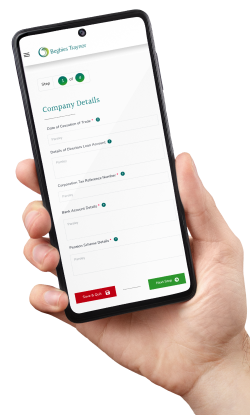Liquidation is a process you can use to close down a solvent or insolvent limited company, but it’s not your only option. If your company is solvent, you may be able to close it in a more cost-effective way. And if it’s insolvent, there may be other routes you can take to potentially save your business.
Company Liquidation is a formal process to close down a trading company. A licensed insolvency practitioner will take control of the business and act as the liquidator. They will bring an end to its affairs and realise its assets for the benefit of the company’s shareholders (solvent) or creditors (insolvent). The company will then be struck off the Companies House register and cease to exist as a legal entity.
Concerned about the National Insurance increase?
For the 2024-25 tax year, the rate of employer National Insurance increases from 13.8% to 15% adding yet more pressure onto already squeezed cash flows. If you are worried about the impact this could have on your company’s finances, talk to the experts at UK Liquidators. As licensed insolvency practitioners we can explain your options and help you plot a way forward. Call today on 0800 063 9262.
Liquidation is not a one size fits all procedure. There are three types of Company Liquidation to close businesses in different positions.
Company strike-off, also known as dissolution, is another method you can use to close your solvent business. The process itself is simple. As long as a majority of the directors agree with the strike-off, you can complete the process online or send paper form DS01 to Companies House and close your business for just £10.
Company strike-off is best suited to companies with assets worth less than £25,000. If your company has assets worth over £25,000, a Members’ Voluntary Liquidation will usually be more tax efficient as your profits will be subject to capital gains tax rather than income tax.
Liquidation Portal
For Company Directors

Before applying for strike-off, you should sell or transfer the company’s assets. Any assets still under the business’s ownership after it has been struck off from the Companies House register will become the property of the Crown.
If your business is struggling financially but you believe it’s still viable, a Company Voluntary Arrangement (CVA) could allow you to continue trading while repaying your debts over time.
A CVA is a formal insolvency procedure, so you’ll need help from a licensed insolvency practitioner to set it up. They will consider your business’s long-term viability and work with you to negotiate a repayment agreement with your creditors.
If your repayment proposal is accepted by 75% (by value) of your creditors, you’ll be able to repay your debts via a single monthly payment over a typical period of three to five years. Any debts remaining at the end of the CVA will be written off.
Company Administration is an insolvency procedure that may be able to keep you trading in some form. It’s best suited to businesses that can no longer pay their debts when they’re due and are facing relentless creditor pressure.
One of the benefits of Administration is that the initial application to the court triggers an eight-week moratorium, which has the effect of pausing all creditor legal action. That temporary protection gives the company breathing space so the administrator can consider plans to rescue, restructure or sell the business.
Administration usually lasts up to 12 months, although the amount of time it takes will depend on the complexity of the case and your exit route out of the process. Administration exit routes include:
The administrator may be able to resolve the company’s financial issues by selling assets, raising additional funds or making an informal repayment agreement with your creditors. The administrator will then give control back to the directors so they can continue trading.
If the company is struggling with its debts, the administrator could negotiate a CVA with the creditors. If the creditors approve, the company can exit Administration and continue trading without the threat of creditor pressure or legal action.
In this process, some or all of the assets of the insolvent business can be sold to a new company, which is often set up by some or all of the directors of the insolvent business. It allows for a continuation of the business, with the new company trading under a new name and without the historic debts.
If the company is no longer viable and the administrator cannot resolve its financial problems, the best course of action might be to close it down. In this case, they can sell the business’s assets during administration before entering a CVL to distribute the proceeds to the creditors and close the business.
Start your online liquidation today
If you have decided liquidation is the right option for your limited company, you can take the first step and begin the process online using our online portal. Starting the process is quick, simple, and can be done at a time that suits you. Your information will be submitted to your local UK Liquidators insolvency practitioner who will be with you every step of the way. Click here to start your company’s liquidation online.
Ultimately, liquidation might be the best course of action for your company, but it’s important to explore the alternatives. With the right advice, you could turn your company around and go on to put a difficult period behind you.
Get in touch for a same-day consultation or arrange a meeting at one of our 100+ UK offices to discuss the most appropriate route forward for your business.
By completing the test, you will receive:
If you are considering liquidation for your company, taking expert advice at an early stage is crucial. At UK Liquidators, our team of licensed insolvency practitioners are committed to providing limited company directors with the help and advice they need to make an informed decision.




Looking for immediate support?
Complete the below to get in touch